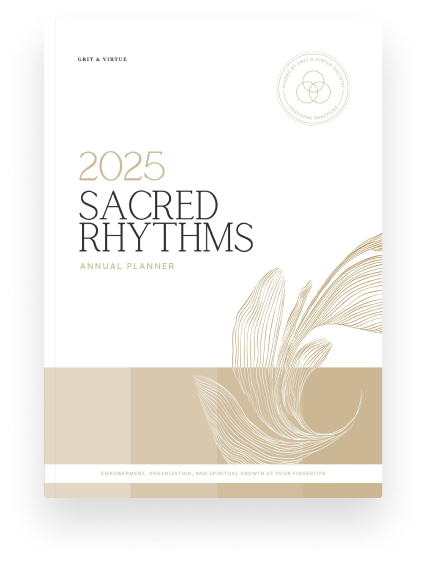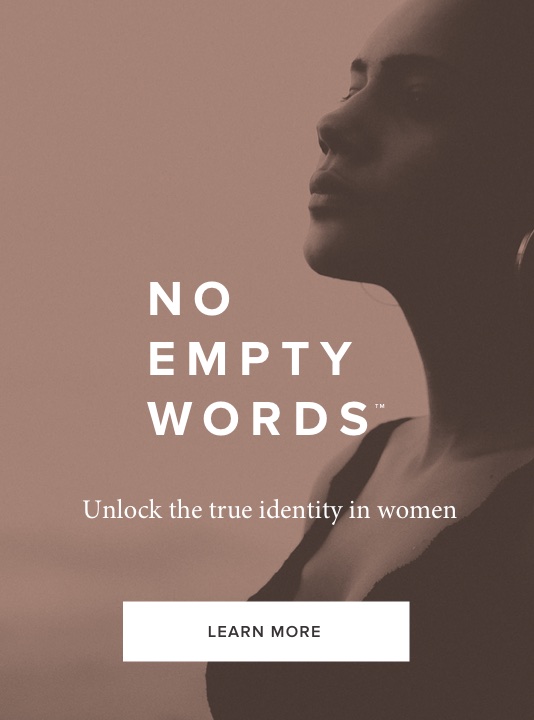Sometimes — without warning — my insides catch fire.
Perhaps you know the feeling.
A conversation with your partner suddenly escalates into a conflict, leaving you feeling indescribably angry and tense.
The cries of your colicky baby or that one certain tone of voice from your child cause your emotions to rapidly accelerate from 0 to 100.
An interaction with a parent sparks a sudden, unexplainable wave of sadness and tears.
Particular interactions with your employer or pastor flush your body with heat and you lose the ability to access your words.
No matter the source, it’s as though a fire alarm inside of us has been pulled, blaring, “PAIN! PAIN! PAIN!”
As women, it is common for us to write off these experiences in several ways. We’re hormonal. Too sensitive. Touched out. Sleep-deprived. When we settle for these explanations, the experiences fade away as quickly as they came, leaving us wondering who, what, and when our next internal landmine will be tripped.
Repeated experiences like this are what often bring people to my therapy practice. I have met with countless women who have come through my door asking a similar question: How do I get these big feelings and uncomfortable sensations in my body to stop so I can go on with my life?
In my irritating-in-a-good-way therapist style, I usually respond to these questions with my own questions.
What if our bodies were sources of information that could be trusted?
What if they were signaling us to important and necessary information we need to attend to?
In his book, Anatomy of the Soul, psychiatrist and therapist Curt Thompson explores two categories of human memory—explicit memory and implicit memory. Explicit memory is what most of us think of when we consider the concept of memory and includes elements like visual images, emotions, and sensory experiences that weave together into a coherent narrative. Implicit memory, on the other hand, is often experienced in the form of a strong emotional response or physical sensation without an accompanying visual image or storyline. As a result, it can feel intense, jarring, and disproportionate to one’s current circumstances.
I am convinced that many of our big emotions and physical responses are our body’s way of saying, I’m remembering something. I’ve felt this way before.
In his immense wisdom and beauty, God created our bodies to heal. In the same way our skin cells regenerate when we get a cut or scrape to the way our blood cells fight infection, our minds were created by God with the capacity to be repaired. In later chapters of The Anatomy of the Soul, Curt Thompson goes on to explain that, when we have a corrective emotional experience in the presence of a painful memory, the structure of our brain itself can change.
My heart for you today is the same as my heart for all of my clients — that you would fight the urge to minimize, downplay, judge, and criticize the story your body is telling you and instead turn toward it with kindness and compassion. If you are interested in learning more about what your body might be telling you, I would encourage you to take some time to complete this simple, four-step exercise.
If any part of this exercise leads you into emotional territory that feels too intense or painful to navigate on your own, please stop and seek the help of a professional, licensed counselor in your area.
Let’s start by grabbing a journal, blank sheet of paper or opening a new note on your phone or document on your computer.
1. Identify a Triggering Interaction
Start by bringing to mind a recent interaction in which you experienced a strong emotional and/or physical reaction. Write down all of the details of the event that you can remember, paying special attention to your emotions, bodily sensations, and the story you told about yourself and others.
2. Follow the Thread
As you begin to put words around your physical and emotional reactions as well as the corresponding narrative, begin to follow the thread by brainstorming other times in your life you may have felt a similar way. Don’t worry about whether these past memories seem connected to your recent experiences or whether they are in chronological order. Write down as many memories as you can think of and your corresponding age.
3. Pinpoint the Root
As you complete the brainstorming process, pay attention to memories that feel especially tender, create spikes of bodily sensations, or connect you to deep emotions. Circle the memory that stands out to you the most.
4. Have a Healing Conversation with Yourself
Many of us lacked the presence of a supportive, caring adult at the times the tender memories we carry were stored in our bodies. And while we can never go back in time to get what we needed, we can provide ourselves with the compassionate care that we needed back then, now.
For the final step of this exercise, imagine yourself at the age of that root memory in your mind’s eye. If this process feels difficult, it can be helpful to look at a childhood photo if you have one. Place your hand on your heart as a physical reminder of your connection to your body, in a posture of compassionate care. Then, take a few moments to write or speak aloud the words that your younger self needed to hear. If you need some help getting started, consider the following phrases:
- I’m sorry you felt …
- I’m sorry you lacked …
- I can understand how that caused you to feel …
- I’m listening
- I’m here now
Finally, if it feels safe and unforced, you can take one step further by inviting Jesus into this memory. Imagine his face as you experienced harm. Consider the words he might say to you. Allow yourself to envision how he would comfort you.
My prayer is that you would know today that your story matters. Your body is a source of immense wisdom. You are worth the time, attention, and care that healing requires. May we all go forth today more assured of the truth that we are beloved.
~
Editor’s note: If you are interested in learning more about the story your body is telling you, Melissa has created a resource to help you go deeper. Just go here to receive a free printable resource that will help you engage your story in a powerful way.
Enjoyed it? Share it!
Melissa Brownback
Melissa is a pastor's wife, mom, and professional counselor who loves listening to and telling stories that reveal the grace and redemptive work of God in the darkest and most unexpected places. She loves being outdoors and exploring her new community in Southern California where she lives with her husband and two little boys.
But wait, there's more...


















